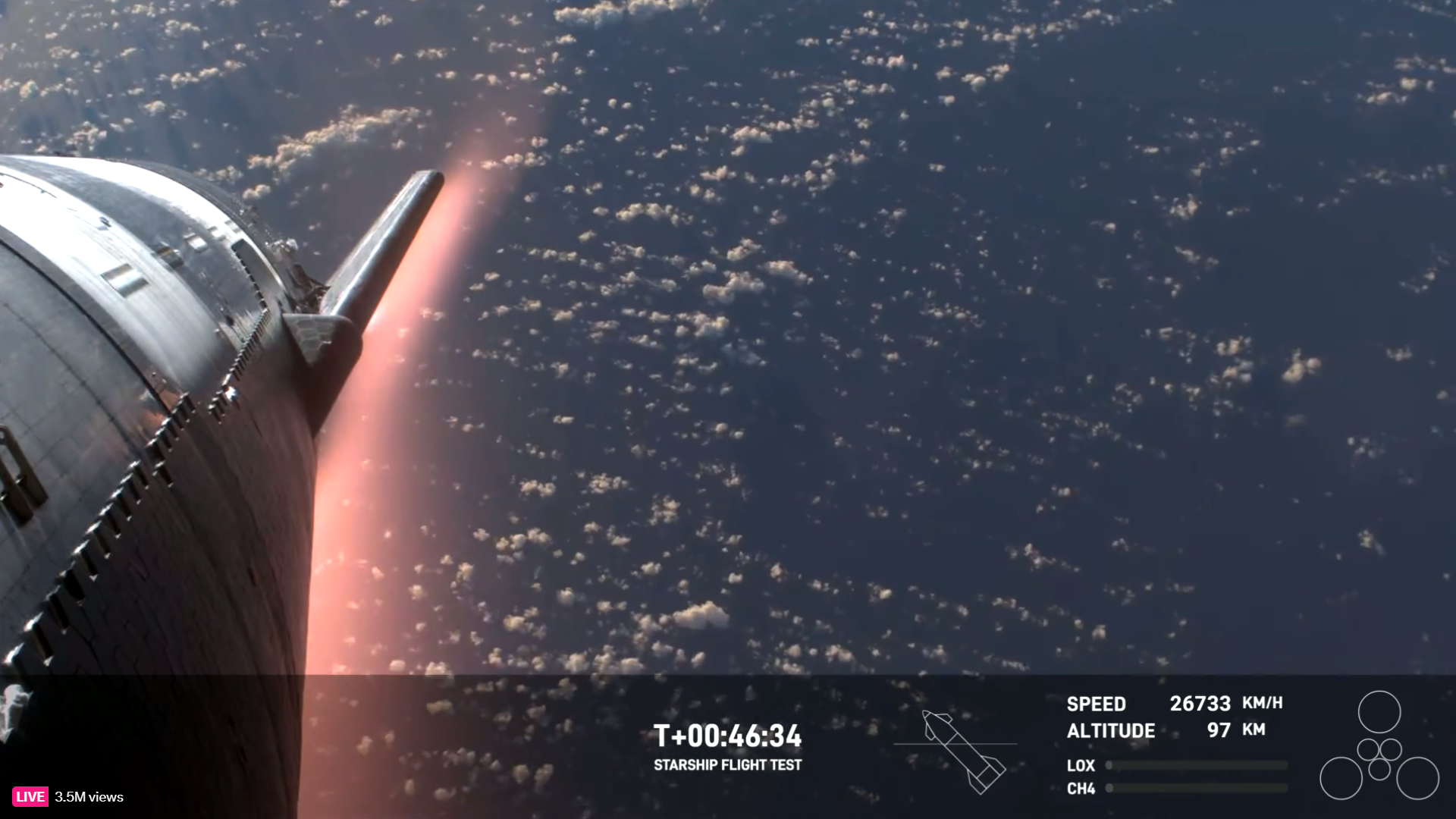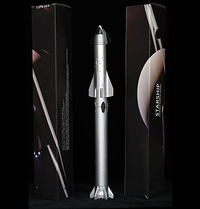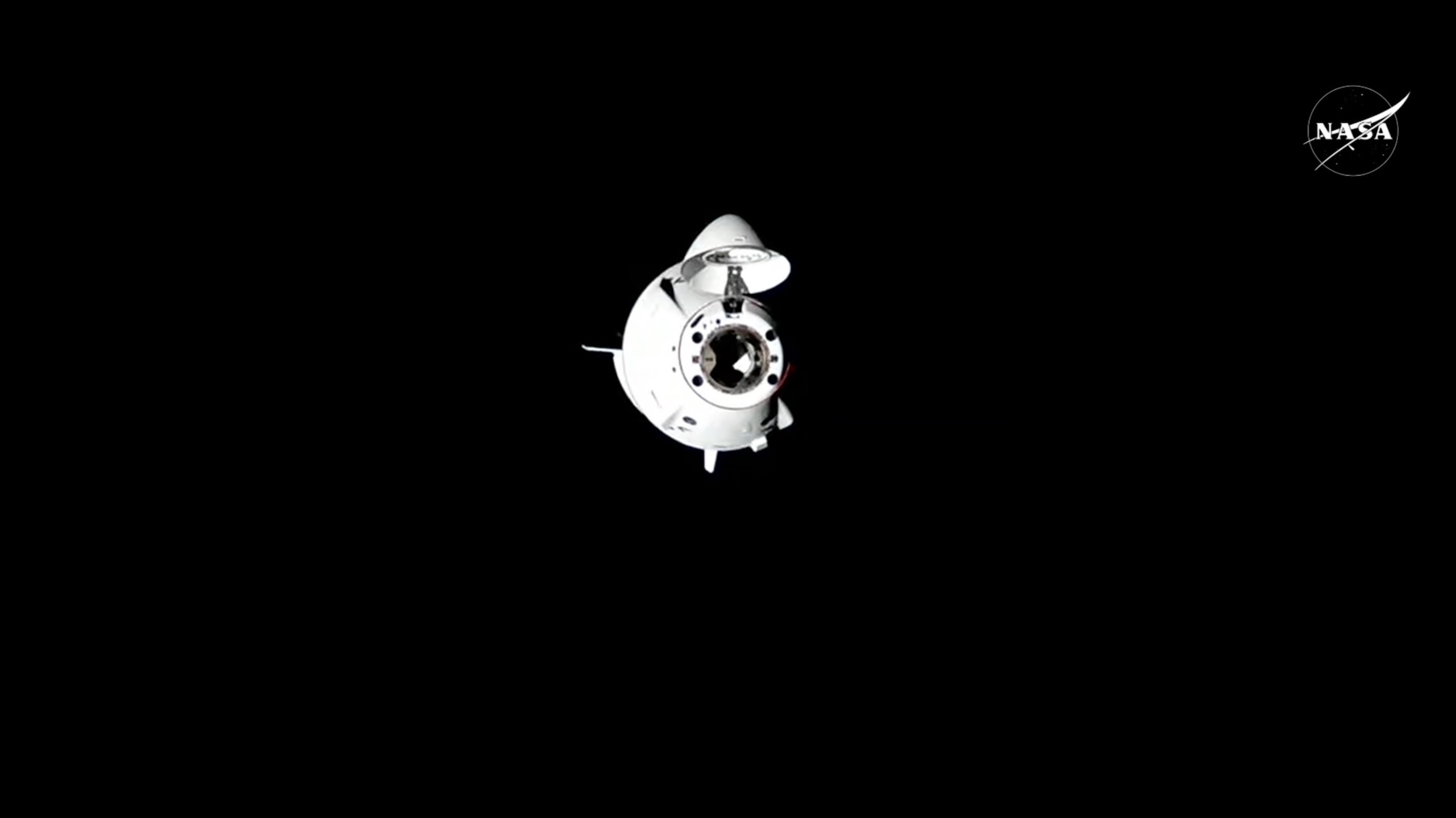NASA celebrates SpaceX Starship's 3rd test flight, but more work needed ahead of Artemis moon missions
Starship notched some important milestones on the March 14 flight but had some issues as well.

SpaceX's third Starship test flight notched "several important firsts" on the long road to landing astronauts on the moon, NASA officials say, but there's a lot more work to do.
Starship flew successfully to space yesterday (March 14) from SpaceX's Starbase site in South Texas and reached orbital velocity, among other achievements. NASA especially paid tribute to Starship's propellant-transfer demonstration in space, which will be important for future moon missions run by NASA's Artemis program. That said, engineers need to review data in the coming weeks to see exactly how well the test flight went.
"With each flight test, SpaceX attempts increasingly ambitious objectives for Starship to learn as much as possible for future mission systems development," Lisa Watson-Morgan, human landing systems (HLS) program manager at NASA's Marshall Space Flight Center in Alabama, said in a March 14 agency statement.
"The ability to test key systems and processes ... allows both NASA and SpaceX to gather crucial data needed for the continued development of Starship HLS," Watson-Morgan added. Starship is the HLS vendor tasked by NASA to land astronauts on the moon during Artemis 3, which is now scheduled to launch no sooner than September 2026.
Related: Relive SpaceX Starship's 3rd flight test in breathtaking photos
SpaceX attempted to transfer fuel in space from one of Starship's tank to another, and both SpaceX and NASA will review the flight data in the coming weeks to see how well that went. The fuel is cryogenic (super-cooled), and engineers want to ensure Starship's stability in space is not unduly affected by the operation, NASA officials wrote.
Engineers will also seek to make the transfer as efficient as possible by examining "the fluid's movement within the tanks," the agency added, with the aim to "ensure [Starship's] Raptor engines receive needed propellant conditions to support restart in orbit."
Breaking space news, the latest updates on rocket launches, skywatching events and more!
During Starship's test flight yesterday, however, vehicle roll rates during the coast phase forced engineers to abandon a "planned on-orbit relight of a single Raptor engine," SpaceX wrote in a mission summary.
SpaceX is pledging rapid flights with Starship soon, with four more of the 400-foot-tall (122 meter) vehicles already built in anticipation of test flights in the coming months. Siva Bharadvaj, a space operations engineer at SpaceX, said during yesterday's launch broadcast that one of those spaceships already underwent a static fire test this week.
Starship Die Cast Rocket Model Now $69.99 on Amazon.
If you can't see SpaceX's Starship in person, you can score a model of your own. Standing at 13.77 inches (35 cm), this is a 1:375 ratio of SpaceX's Starship as a desktop model. The materials here are alloy steel and it weighs just 225g.
Note: Stock is low so you'll have to act quickly to get this.
NASA, however, has been saying it wants repeated successes before putting astronauts on board Starship. In June 2023, for example, agency official Jim Free said SpaceX will have to finish "a significant number of launches" ahead of Artemis program activities. NASA has also raised concerns about the pace of Starship development a few times in recent months.
Artemis 3 was delayed this January to a September 2026 launch, about a year past its previous target, in part due to Starship's slower development pace and in part due to various technical issues with NASA's Orion crew spacecraft, private industry spacesuits and other critical items. Last month, however, NASA highlighted success with Starship docking system tests and said SpaceX finished "more than 30 HLS specific milestones" on various hardware pieces.
SpaceX is not the only HLS vendor; Blue Origin got a NASA contract for crewed moon-landing services as well. SpaceX was initially and unexpectedly chosen as the sole winner in 2021 for HLS contracts, after NASA pledged to select multiple vendors. In response to competitor protests, the Government Accountability Office found no "competitive prejudice" in NASA's decision. But in October 2021, the U.S. Senate directed NASA to select a second company, and the agency eventually chose Blue Origin for its Blue Moon lander system.
Join our Space Forums to keep talking space on the latest missions, night sky and more! And if you have a news tip, correction or comment, let us know at: community@space.com.

Elizabeth Howell (she/her), Ph.D., was a staff writer in the spaceflight channel between 2022 and 2024 specializing in Canadian space news. She was contributing writer for Space.com for 10 years from 2012 to 2024. Elizabeth's reporting includes multiple exclusives with the White House, leading world coverage about a lost-and-found space tomato on the International Space Station, witnessing five human spaceflight launches on two continents, flying parabolic, working inside a spacesuit, and participating in a simulated Mars mission. Her latest book, "Why Am I Taller?" (ECW Press, 2022) is co-written with astronaut Dave Williams.

